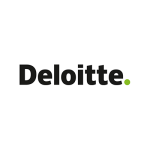Business leaders are facing a challenging business environment. Few, if any, have experience dealing with hyperinflation. Fewer still have done so amid a pandemic, supply chain disruptions and large-scale geopolitical tension. Now they are looking to their functional leaders – tax in particular – to help them make smart and informed decisions.
There is a lot of pressure on the tax function to deliver. Businesses are seeing the tax function as a potential centre of business insights and predictive analytics. They are looking to their tax professionals to provide increasingly sophisticated and strategic services to the business.
In today’s fluid business environment, that means delivering faster, more insightful and more accurate strategic advice to decision-makers.
Wanted: Tax advisory support
Tax and finance leaders expect demand for tax advice to spike across the business. In a survey of more than 300 tax and finance leaders conducted by Deloitte Tax, almost three-quarters said they expect to see increased demand for tax advisory support around digital business models.
Around half of the respondents said they anticipate heightened demand for strategic tax advice on supply chain restructuring activity, sustainability and ESG activity, and strategic transactions.
No choice but to change
At the same time, the relationship with tax authorities is changing – forcing tax functions to rethink how they will operate in the future. It’s not just a result of the work going on at the OECD to modernise global tax regimes (though that is certainly forcing businesses to rethink their tax operating models going forward).
Tax authorities are moving towards real-time digital reporting in many jurisdictions. 70% of tax leaders think that revenue authorities will have direct access to their systems within the next five years. Tax and business leaders know their tax environment must change if they want to keep up.
Making it happen
What are the leading tax functions doing to meet the rising expectations of the business? Deloitte’s research suggests they are focusing on three core areas.
Technology
Technology has become a powerful catalyst for change in the tax function.
On the one hand, tax leaders are adopting new technologies within their own operations to drive enhanced efficiency and to help reduce the resource requirements of routine tasks. Automation, machine learning and even blockchain technologies are allowing tax professionals to focus more of their attention onto the strategic tasks the business demands.
On the other hand, the leading tax functions are also working hard to align their transformation journey to their organisation’s NextGen ERP roadmap, working with the business and the IT function to prioritise and integrate their technology requirements and to ‘tax-sensitise’ key data.
Talent
The leading tax functions are fundamentally rethinking their workforce strategy and capability requirements to meet the needs of the business. Deloitte’s survey suggests tax leaders are keen to grow their data analytics and their technology transformation skills. They are also focused on enhancing their cross-business advisory skills and their capabilities in key business focus areas such as digital business models, supply chain transformation and environmental, social and governance (ESG) issues.
Finding, attracting and retaining those skills and talent has not been easy, however. Many are looking at innovative ways (such as a ’three-in-a-box’ approach that puts a tax expert, a technology expert and a transformation expert together) to quickly upskill their existing professionals to adapt to the new world.
Operating models
The leading tax functions see a massive opportunity to redesign their operating models to better align to future demand. In some cases, this is about leveraging traditional outsourcing and shared services approaches to move routine tasks, such as compliance and reporting, outside the organisation.
We are also seeing many tax functions start to employ sophisticated self-service models to shift some activities out to the business. Others are using outsourcing models to innovate certain processes, after which the process is re-integrated back into the tax function.
There is no ‘winning operating model’ for tax but the best tax operating models are those that are aligned to the objectives of the business.
Your next steps
We spend all our time helping tax and finance leaders transform their tax functions into more strategic, value-adding and aligned organisations. Our experience suggests there are five key steps to creating your optimal tax operating model:
1. Understand the landscape. Assess the technology, talent and tax operating models available and identify the future requirements of the business and tax authorities;
2. Create a roadmap. Align your journey to the overall business roadmap and prioritise your next steps to achieve buy-in and support from the business;
3. Educate your stakeholders. Build a robust business case for change that educates stakeholders on the value of investment into tax transformation;
4. Get the right talent. Bring in the skills required to deliver your transformation while developing the capabilities demanded by the business over the long-term; and
5. See the bigger picture. Carefully consider how the move to digital tax administration will influence the design of your operating model.
The current business environment is providing tax with a seat at the strategy table. Yet, for most, stepping up to the opportunity will require the tax function to fundamentally transform. Are you ready to build a better tax function?
Read the full Deloitte Tax Transformation Trends Executive Summary report here.













